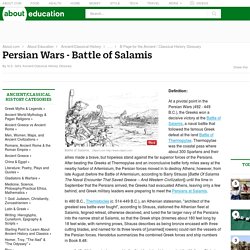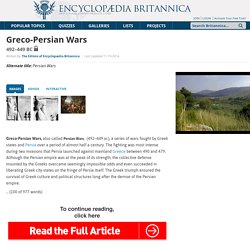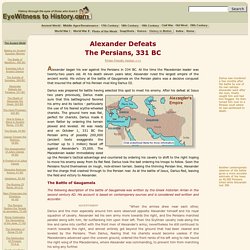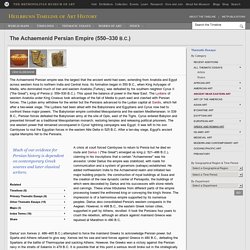

Persia: Ancient Soul of Iran. What's so striking about the ruins of Persepolis in southern Iran, an ancient capital of the Persian Empire that was burned down after being conquered by Alexander the Great, is the absence of violent imagery on what's left of its stone walls.

Among the carvings there are soldiers, but they're not fighting; there are weapons, but they're not drawn. Mainly you see emblems suggesting that something humane went on here instead—people of different nations gathering peacefully, bearing gifts, draping their hands amiably on one another's shoulders. In an era noted for its barbarity, Persepolis, it seems, was a relatively cosmopolitan place—and for many Iranians today its ruins are a breathtaking reminder of who their Persian ancestors were and what they did. The recorded history of the country itself spans some 2,500 years, culminating in today's Islamic Republic of Iran, formed in 1979 after a revolution inspired in part by conservative clerics cast out the Western-backed shah.
Ancient Persia: Kings. Ancient dam, Persia. Map of the extent of Persia in 490 B.C. Ancient Persia - HowStuffWorks. Persia, the name by which Iran was known until 1935.

This article deals with the people, culture, and history of Persia up to that time. For geography, agriculture, industry and commerce, government, and recent history, Persia is one of the oldest countries in the world. Where other historic nations built great empires and enjoyed a single period of grandeur before their decline, Persia rose to imperial conquest and greatness again and again. Its first empire was established in the 6th century B.C.; its last, in the 16th century A.D. The ancient Persians, an artistic people, borrowed architectural forms and art motifs from Assyria.
Women's Lives in Ancient Persia. By: Massoume PriceCulture of Iran Any analysis of women’s lives and status in ancient times is a very complicated task and needs time and space.

This very brief article intends to provide much needed basic information based on archaeological evidence and will primarily deal with women in Achaemenid times. The material is based on Fortification and Treasury texts discovered at Persepolis (509-438 BC) and documents recovered at Susa Babylonia and other major Mesopotamian cities of the period. These texts provide us with a unique insight into the social and economic situation of both the royal and non-royal women at the time. In the texts individual women are identified, payments of rations and wages for male and female workers are documented and sealed orders by the royal women themselves or their agents gives us valuable information on how these powerful women managed their wealth.
Persian Empire. Persian Empire - Timeline and Definition. Battle of Salamis During the Persian Wars. Definition:

Greco-Persian Wars. Alternate title: Persian Wars Greco-Persian Wars, also called Persian Wars, (492–449 bc), a series of wars fought by Greek states and Persia over a period of almost half a century.

The fighting was most intense during two invasions that Persia launched against mainland Greece between 490 and 479. Alexander Defeats The Persians, 331 BC. Alexander Defeats The Persians, 331 BC Alexander began his war against the Persians in 334 BC.

At the time the Macedonian leader was twenty-two years old. At his death eleven years later, Alexander ruled the largest empire of the ancient world. His victory at the battle of Gaugamela on the Persian plains was a decisive conquest that insured the defeat of his Persian rival King Darius III. Darius was prepared for battle having selected this spot to meet his enemy. After his defeat at Issus two years previously, Darius made sure that this battleground favored his army and its tactics - particularly the use of his feared scythe-wheeled chariots. The Achaemenid Persian Empire (550–330 B.C.) The Achaemenid Persian empire was the largest that the ancient world had seen, extending from Anatolia and Egypt across western Asia to northern India and Central Asia.

Its formation began in 550 B.C., when King Astyages of Media, who dominated much of Iran and eastern Anatolia (Turkey), was defeated by his southern neighbor Cyrus II ("the Great"), king of Persia (r. 559–530 B.C.). This upset the balance of power in the Near East. The Lydians of western Anatolia under King Croesus took advantage of the fall of Media to push east and clashed with Persian forces. The Lydian army withdrew for the winter but the Persians advanced to the Lydian capital at Sardis, which fell after a two-week siege. The Lydians had been allied with the Babylonians and Egyptians and Cyrus now had to confront these major powers. Darius' son Xerxes (r. 486–465 B.C.) attempted to force the mainland Greeks to acknowledge Persian power, but Sparta and Athens refused to give way. Persian Battle of Thermopylae Summary (300 Movie)